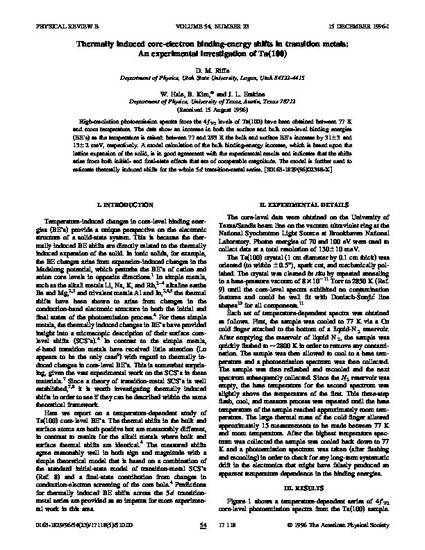
High-resolution photoemission spectra from the 4f7/2 levels of Ta(100) have been obtained between 77 K and room temperature. The data show an increase in both the surface and bulk core-level binding energies (BE’s) as the temperature is raised: between 77 and 293 K the bulk and surface BE’s increase by 31±3 and 13±2 meV, respectively. A model calculation of the bulk binding-energy increase, which is based upon the lattice expansion of the solid, is in good agreement with the experimental results and indicates that the shifts arise from both initial- and final-state effects that are of comparable magnitude. The model is further used to estimate thermally induced shifts for the whole 5d transition-metal series. © 1996 The American Physical Society.

Published by American Physical Society in Physical Review B. Publisher PDF is available for download through link above.